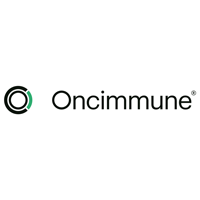Geoffrey Hamilton-Fairley, CEO of Oncimmune LON:ONC, commented: “Today’s positive interim data add further to the growing evidence that the EarlyCDT-Lung test has the potential to play a significant role in the early detection of lung cancer and save lives and money. EarlyCDT-Lung can detect cancer up to four years earlier than other methods allowing cancers to be found at Stage 1 or 2, meaning that patients can be treated with surgery and not require any (or only limited) chemotherapy, reducing morbidity rates and significantly lowering the cost of treatment.”
Positive interim data from NHS Lung Cancer Screening Trial using EarlyCDT(R)-Lung test to be presented at the 17(th) World Conference on Lung Cancer
— Data remain encouraging with early detection of lung cancer four times more likely with EarlyCDT-Lung followed by CT screening than current standard of care
— The trial is now fully recruited with over 12,000 patients; largest randomised trial for the early detection of lung cancer using biomarkers ever conducted
— Final results may enable the adoption of EarlyCDT-Lung screening in the UK and by other countries
Oncimmune Holdings plc (AIM: ONC.L), a leading early cancer detection company developing and commercialising its proprietary EarlyCDT(R) platform technology, today told DirectorsTalk about the positive interim data from the National Health Service (NHS) Scotland ECLS Lung Cancer Screening Trial. This study uses Oncimmune’s EarlyCDT(R)-Lung test, and will be presented at the International Association for the Study of Lung Cancer’s 17th World Conference on Lung Cancer in Vienna, Austria. The trial is the largest randomised trial for the early detection of lung cancer using biomarkers ever conducted.
The interim results of the study, which is now fully recruited with 12,210 patients, showed that 599 (9.8%) of the test group had a positive test with 275 found to have lung nodules larger than 8mm. 16 lung cancers have been detected, 12 (75%) of which are early stage.
At present, approximately 20% of lung cancers are detected incidentally at an early stage, for example, during a scan for heart disease, however, the remaining 80% present symptomatically, which may be up to four years after it could have been detected by the EarlyCDT-Lung test followed by CT screening.
The test continues to show high sensitivity, however, it should be noted that the control arm has not been formally assessed. The final study results, including the control arm, will be published after all patients have had two years of follow up CT scans and these are expected in 2019.
These study results will enable the NHS to make a decision about whether to offer the EarlyCDT-Lung test as a nationwide screening test in the future and may enable the adoption of EarlyCDT-Lung screening by other countries.
The poster session presentation by Professor Frank Sullivan, “An RCT of the Detection of Autoantibodies to Tumour Antigens in Lung Cancer Using the EarlyCDT-Lung Test in Scotland (ECLS) in 12,210 Study Subjects (ID 4546)”, is scheduled to take place today at 2.30pm CET in Hall B, Messe Wien Exhibition & Congress Center, Messeplatz 1, A-1021 Vienna.
Professor Frank Sullivan, Chief Investigator of the ECLS Study said: “The ECLS Study is now fully recruited with over 12,000 patients. The results continue to be very encouraging and suggest it could be possible to detect early stage lung cancers sooner than with current methods. We look forward to completing the study and presenting full results, including the control group, after the full follow up period.”
First announced in March 2012, the ECLS Study is designed to determine whether use of the EarlyCDT-Lung test as a screening method leads to earlier detection of lung cancer and can help to save lives in the long term. The study will also asses the health economics to see how cost effective EarlyCDT-Lung will be as a primary screening test. The rationale is that patients pre-identified as being at high risk of lung cancer take the EarlyCDT-Lung test. Those who receive a positive result are effectively triaged into a much higher risk group and are referred for X-ray and Low Dose Computed Tomography (LDCT). This high-risk selection protocol results in many fewer LDCTs but it is expected to still deliver the same mortality benefit that National Lung Screening Trial (NLST) in the USA has established.


